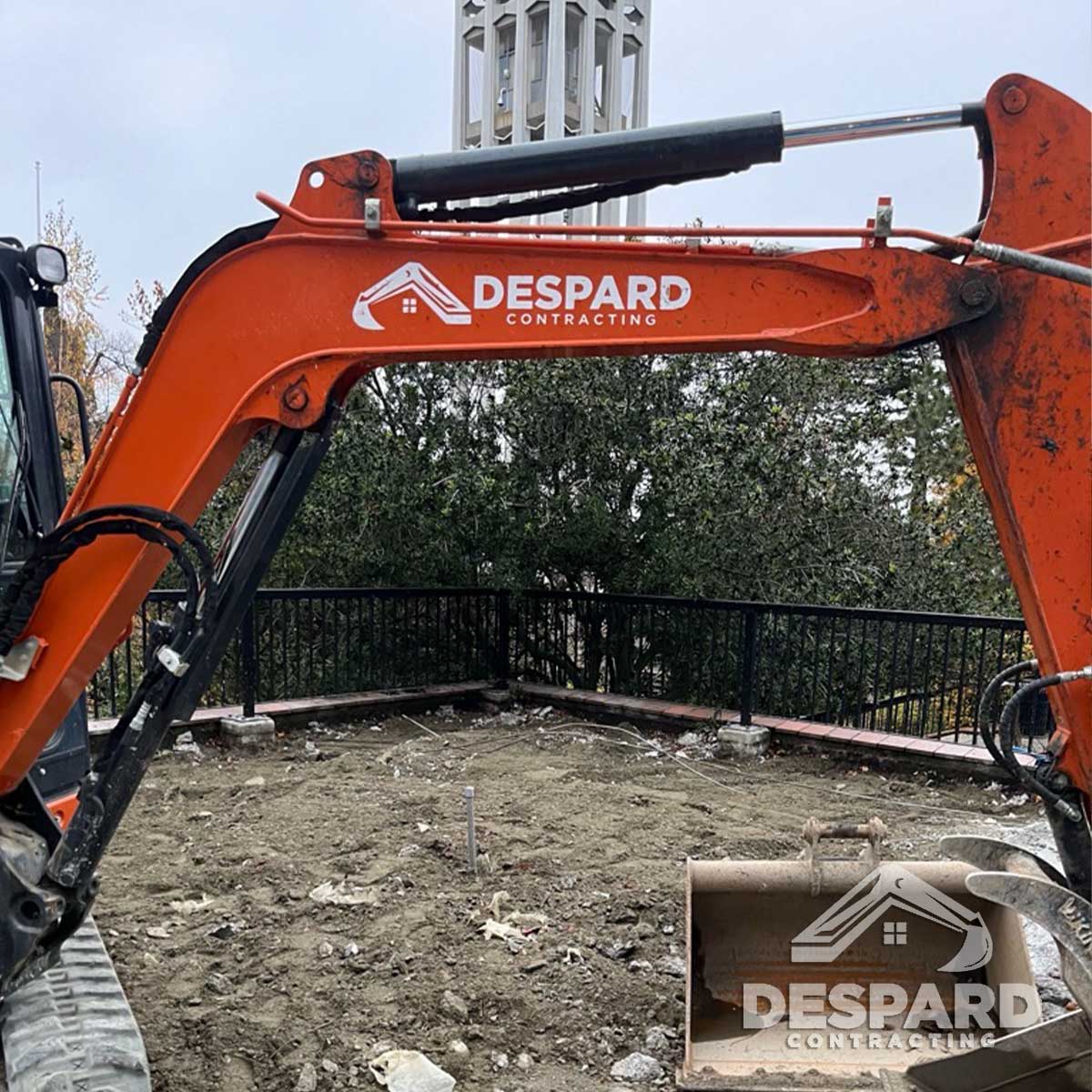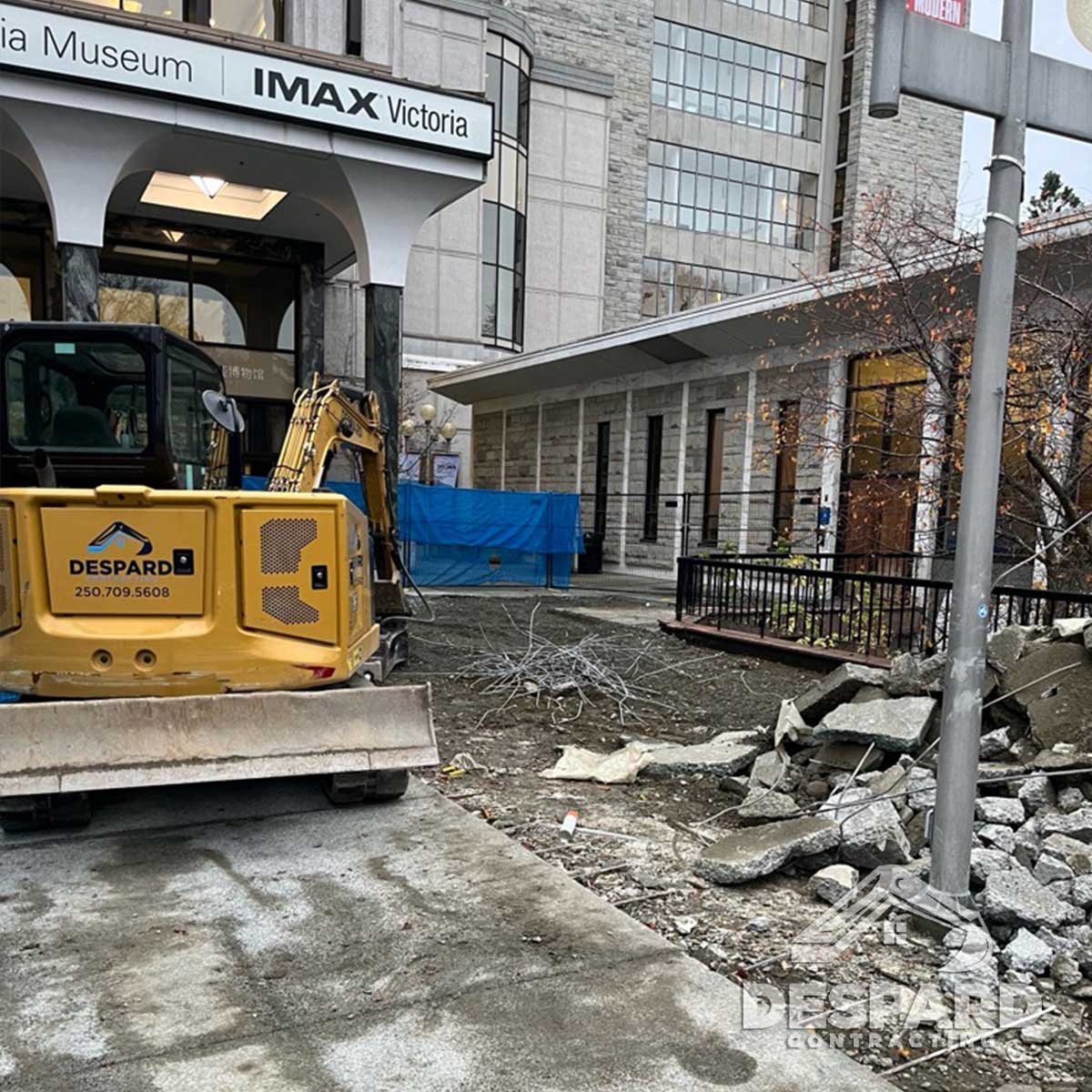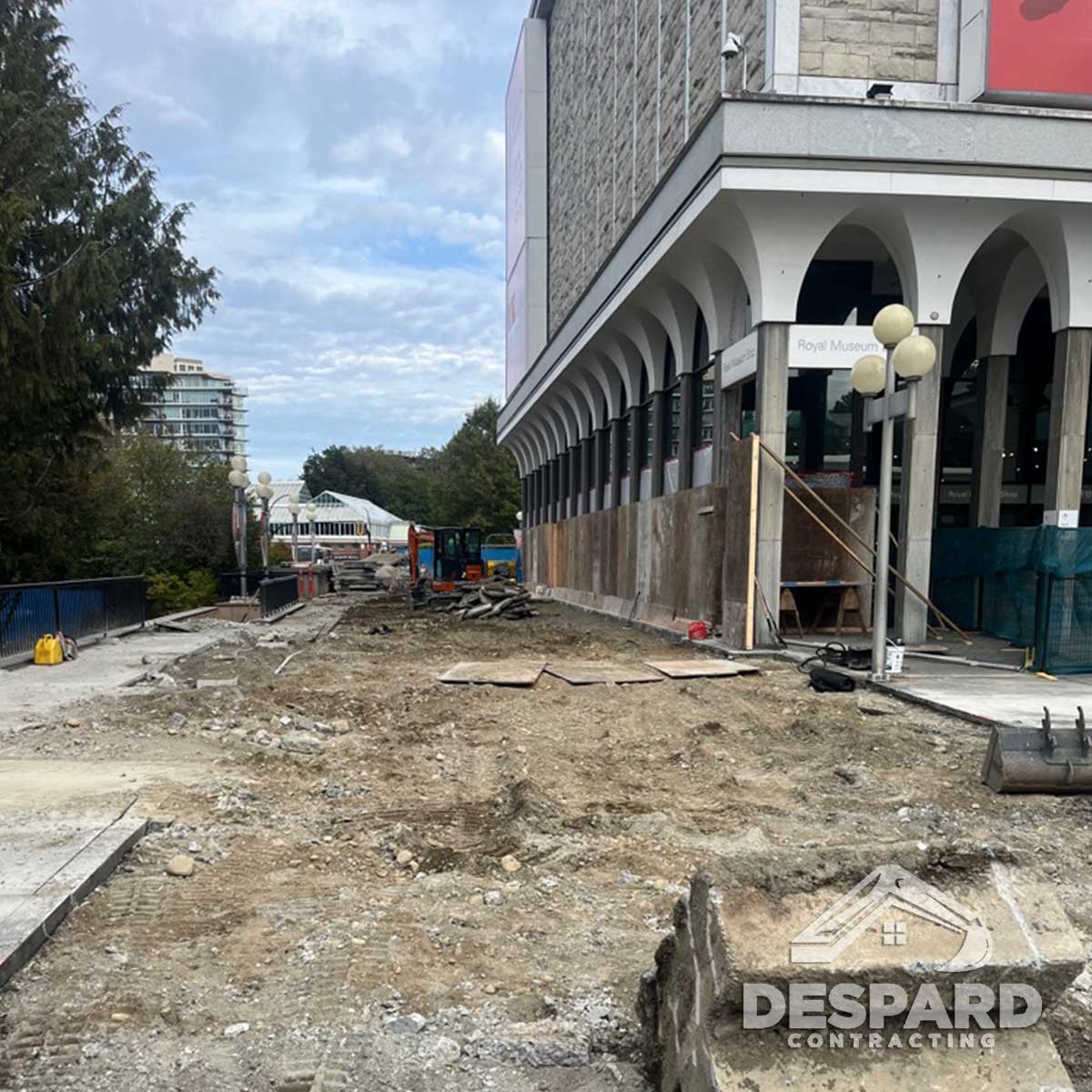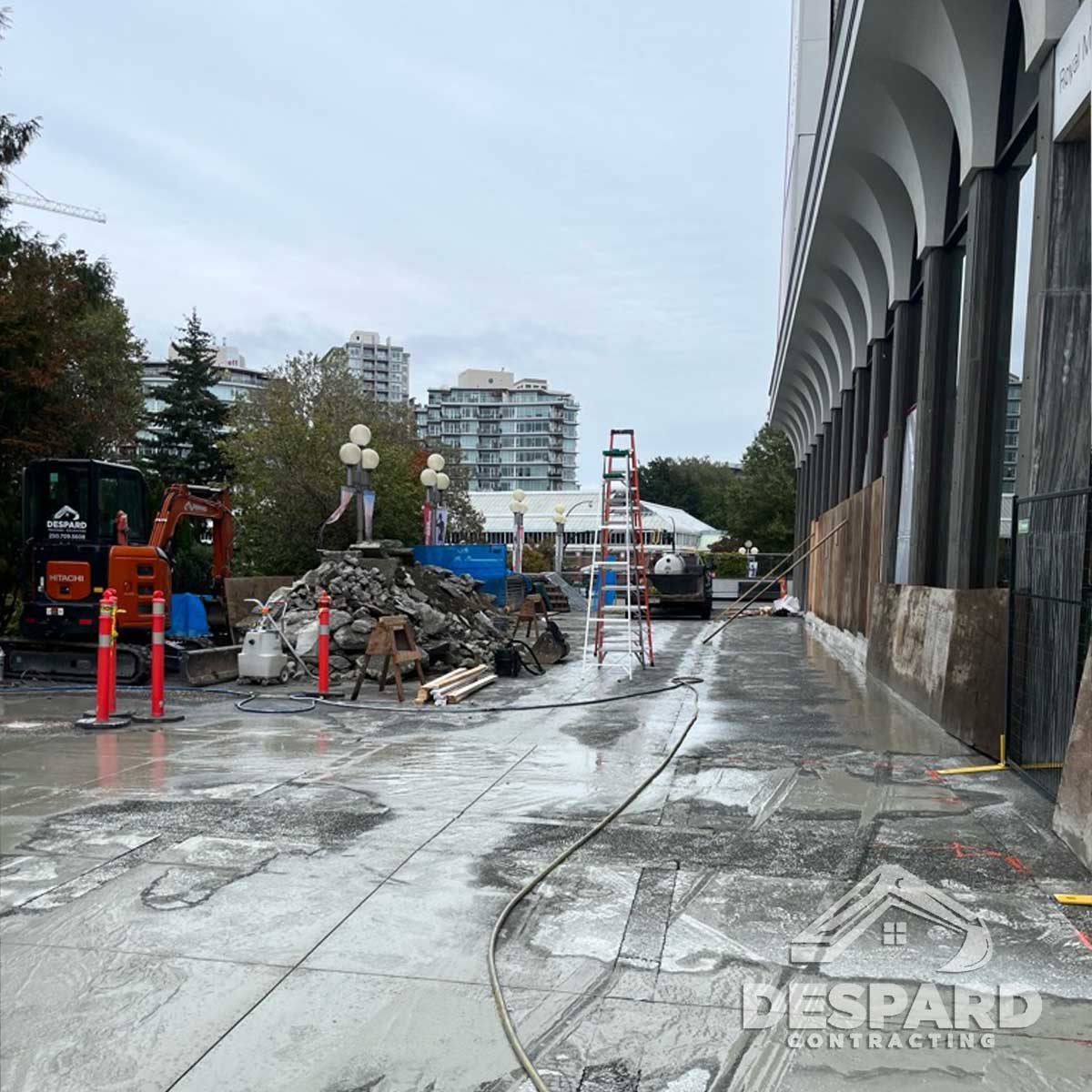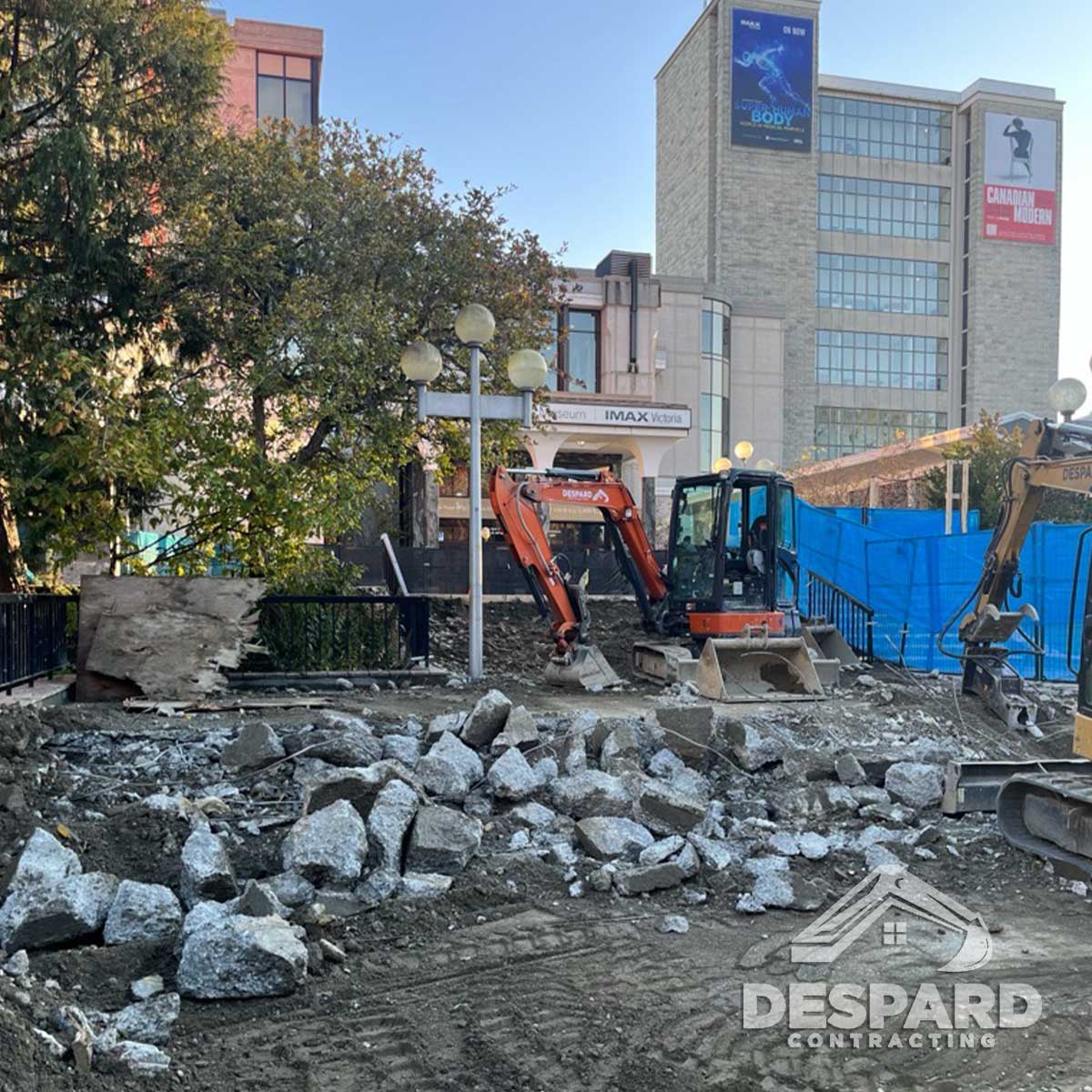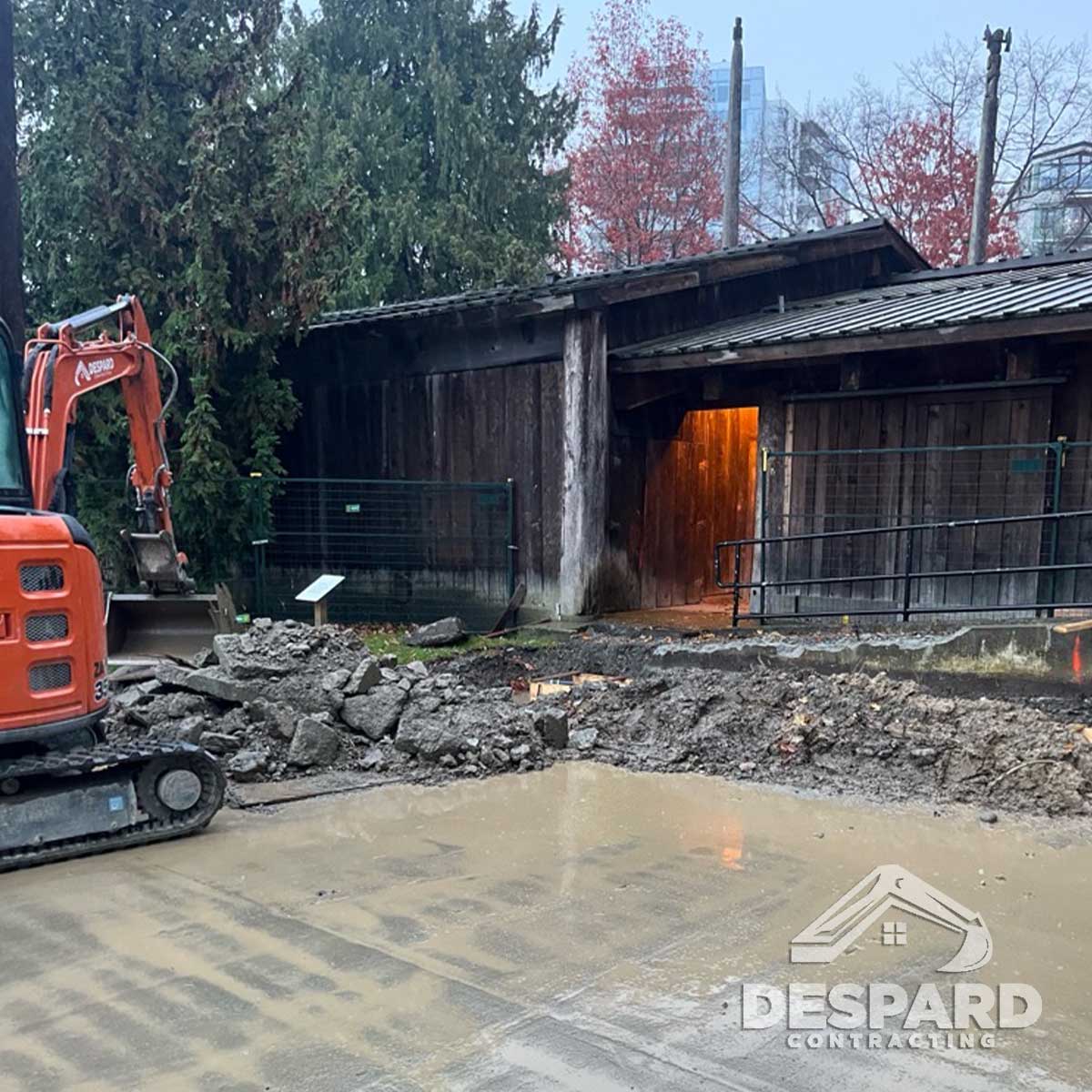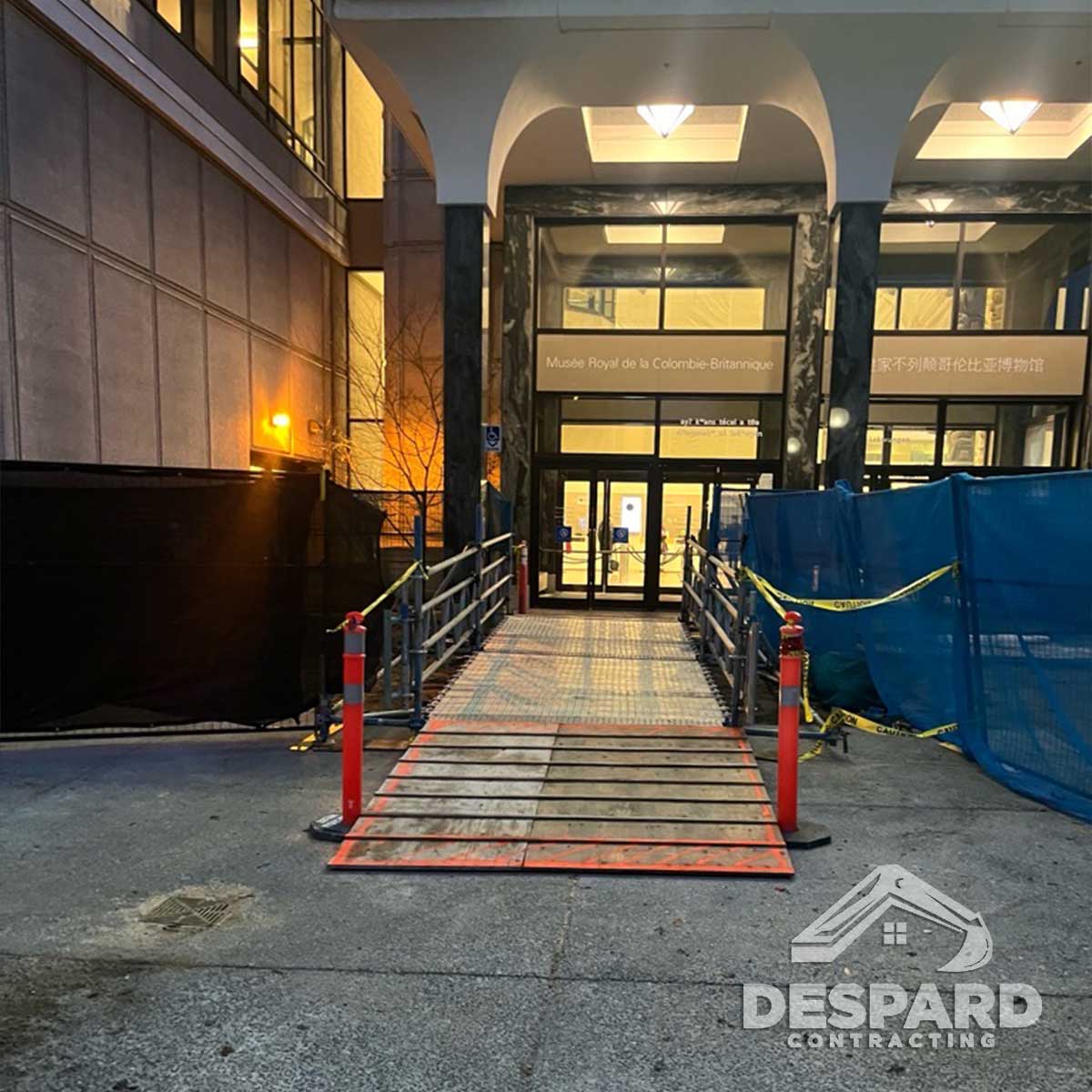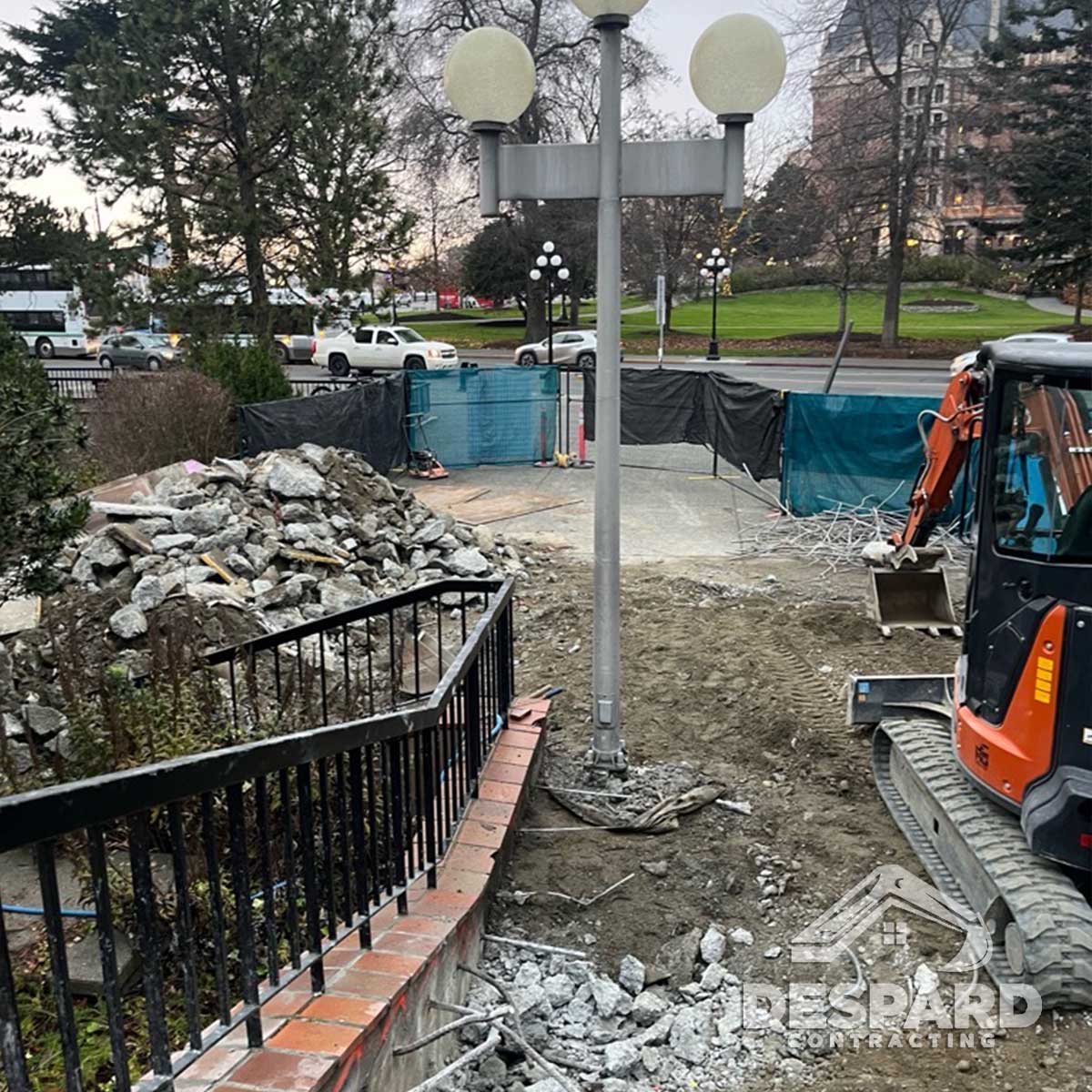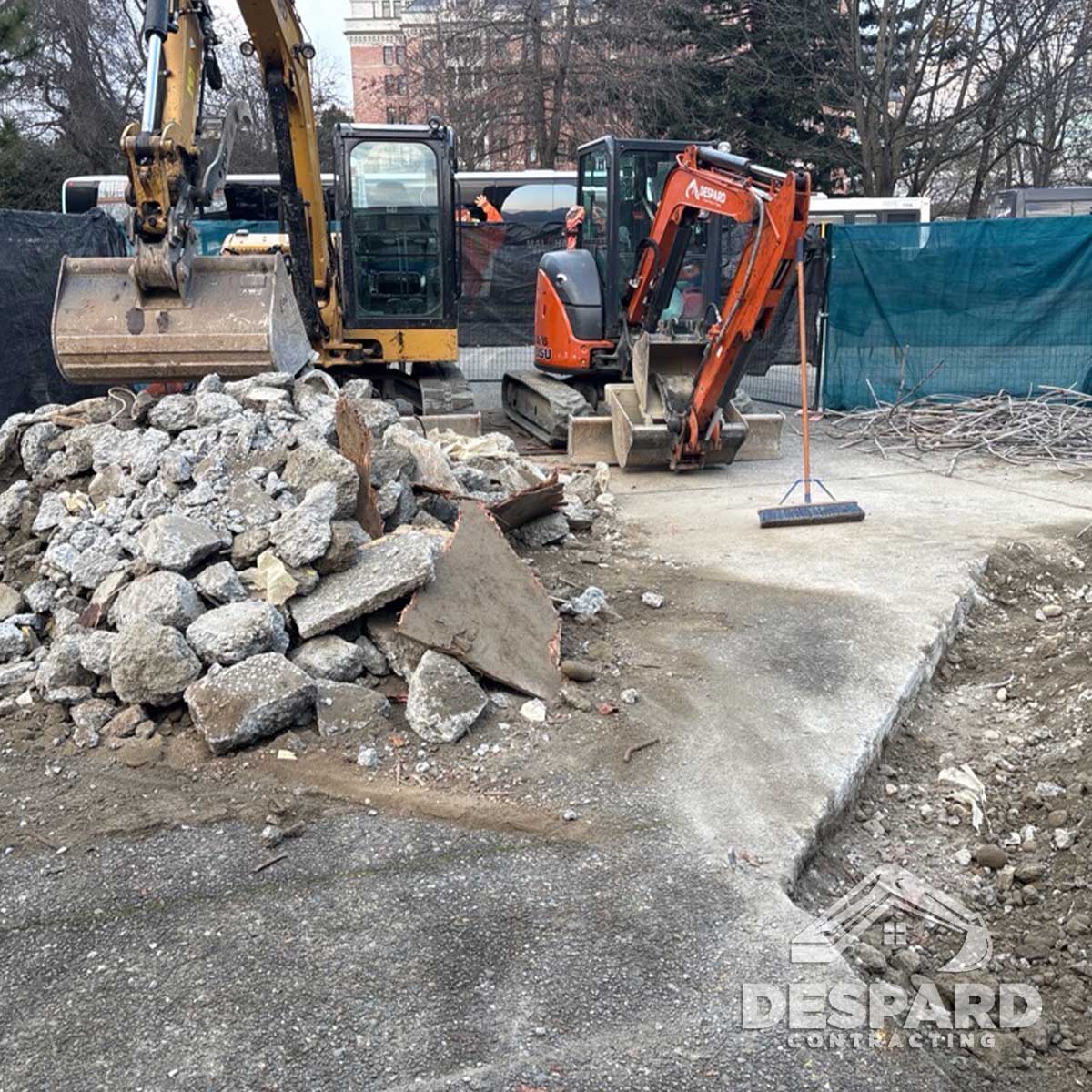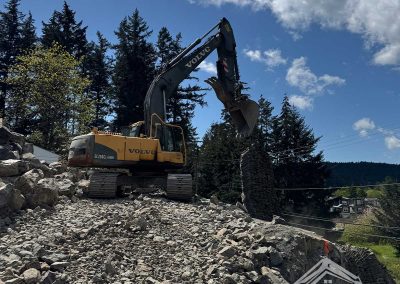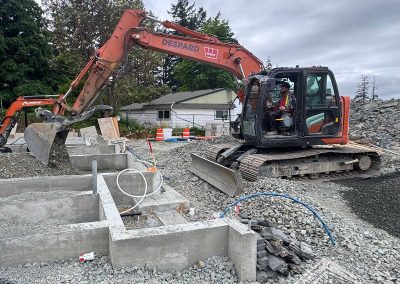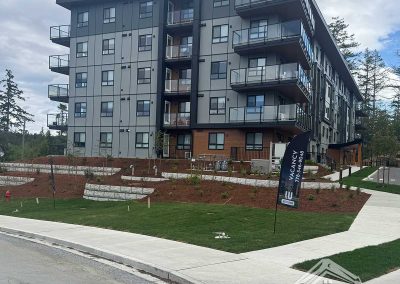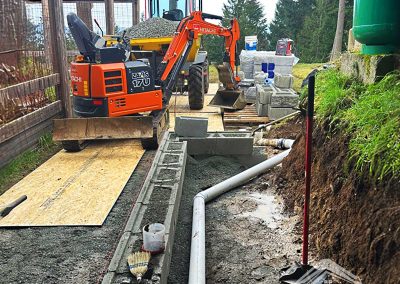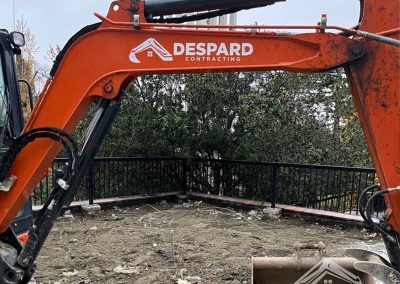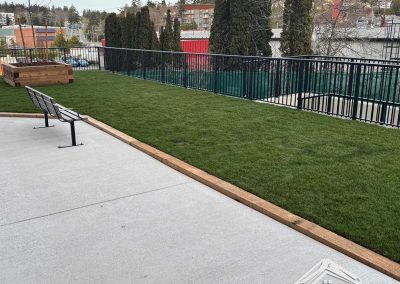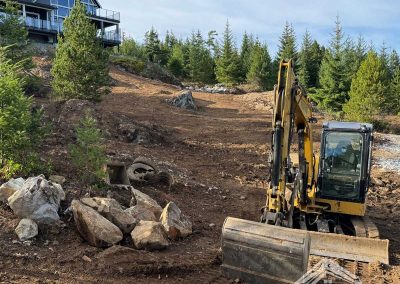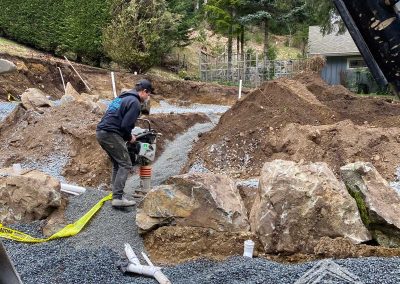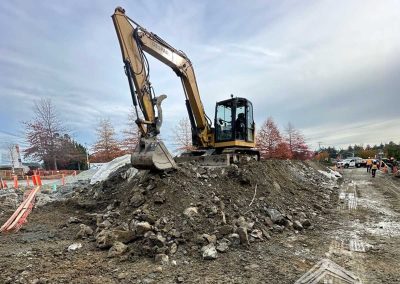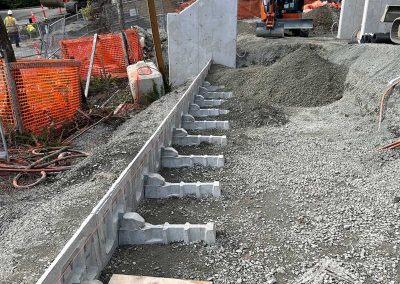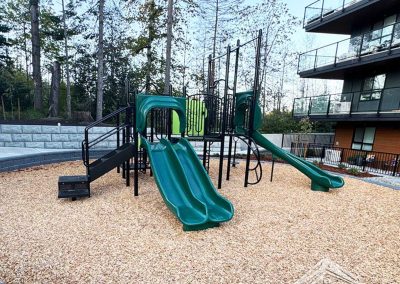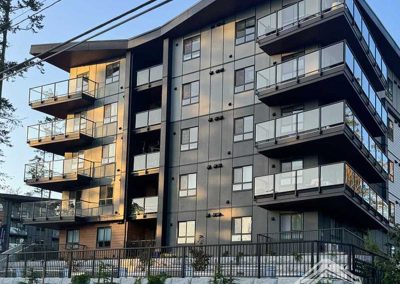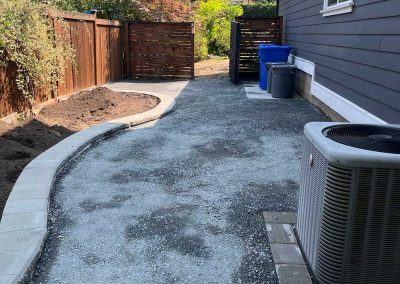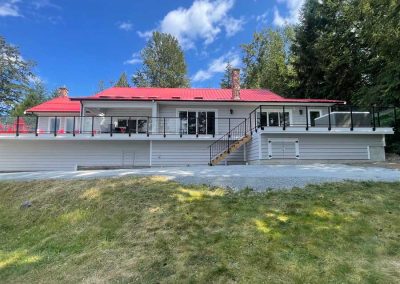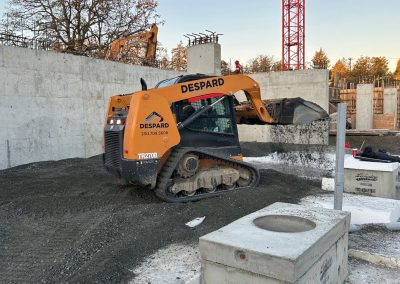Scoped Planning and Method Selection
Every successful removal begins with a rigorous plan. Despard’s team conducted on-site assessments, surveyed adjacent building interfaces, and mapped all utilities and protected zones before work commenced. From these findings, the team selected methods that balanced speed, control, and vibration management—prioritizing sawcutting and controlled breaking over aggressive demolition where sensitive adjacencies were present. A clear sequence of operations, access routing, and debris logistics ensured that each step supported the next with minimal re-handling and zero compromise to safety.
Precision Concrete Removal
The core scope centered on isolating, cutting, and removing targeted concrete sections without transferring stress to adjoining elements. Dust suppression, water capture, and debris containment were integrated into the process to protect the museum’s interior and exterior environments. Where needed, temporary shoring and protection boards were installed to shield finishes, glazing, and exhibits, enabling the crew to work efficiently in close proximity to public spaces while maintaining high standards of cleanliness and care.
Advanced Equipment and Techniques
Despard deployed purpose-built equipment to keep tolerances tight and vibrations low. Diamond saws created clean separation joints, minimizing micro-cracking and simplifying removal. Low-impact breakers and coring rigs provided controlled dismantling in confined areas, while compact loaders and skid steers handled debris swiftly without overloading pathways. Material handling plans emphasized short travel routes and organized staging zones, ensuring that each movement supported efficiency and minimized environmental impact.
Safety, Environmental Care, and Compliance
Safety remained at the forefront throughout the project. Site-specific orientations, lockout-tagout procedures, and daily safety meetings reinforced hazard awareness and best practices. Dust and noise control systems were adjusted dynamically based on conditions, while all materials were handled according to municipal and environmental standards. Waste segregation and recycling were prioritized, aligning with both client expectations and Despard’s environmental responsibility commitments.
Museum Operations and Public Interface
Working within an operational museum required careful timing, communication, and coordination. Despard Contracting liaised closely with museum management to schedule high-impact tasks during off-peak hours, reducing disturbance to visitors and staff. Temporary barriers and signage maintained clear and safe circulation routes for the public. This adaptive, courteous approach exemplified the company’s ability to execute complex work in sensitive, high-traffic environments.
Project Completion and Lasting Value
Upon completion, the site was left clean, safe, and ready for the museum’s next phase of improvements. The work demonstrated Despard Contracting’s ability to combine precision demolition with professional site management—balancing technical requirements with respect for heritage, community, and long-term development goals. The BC Museum project stands as another example of Despard’s proven experience in delivering efficient, reliable, and environmentally conscious results.

